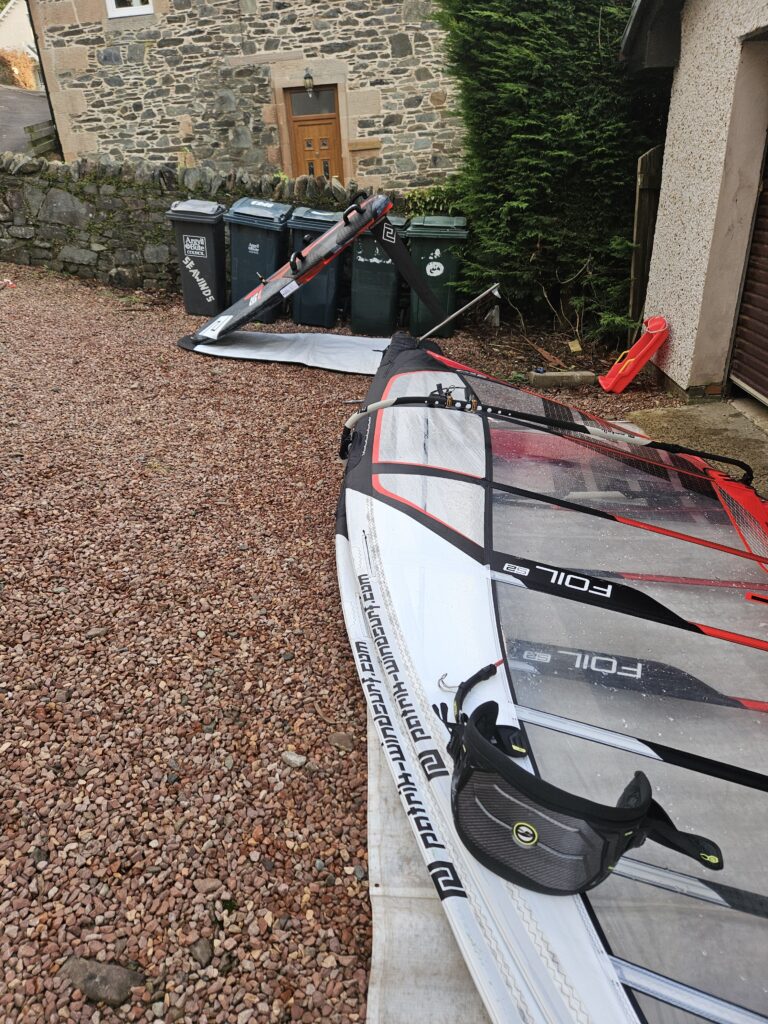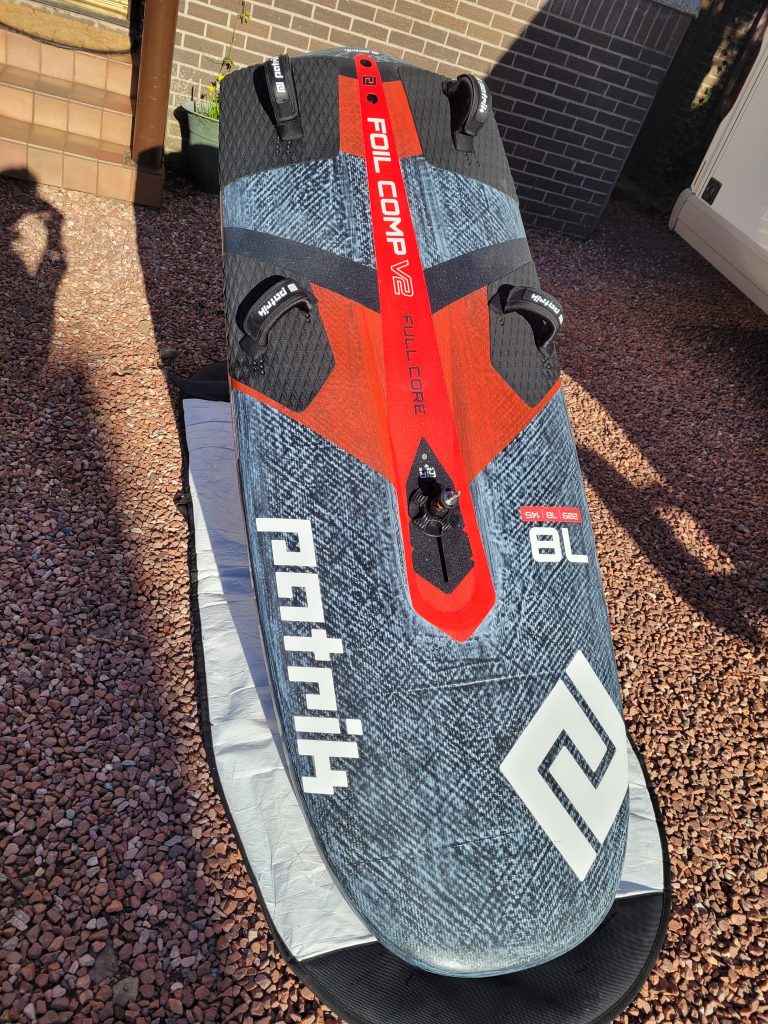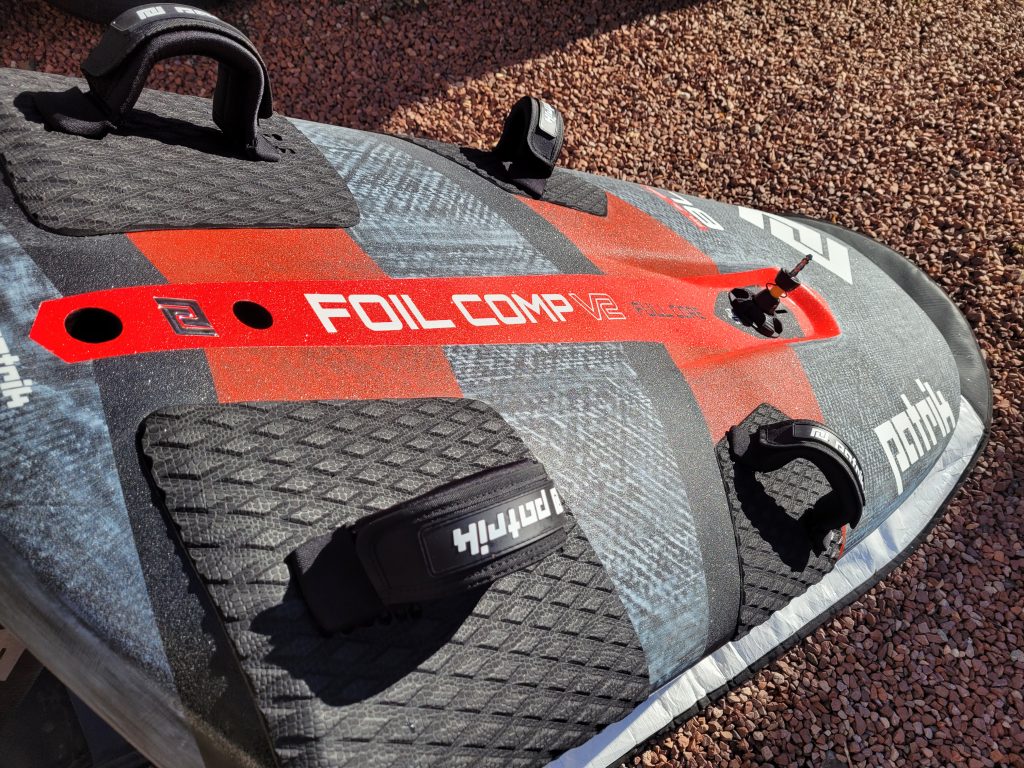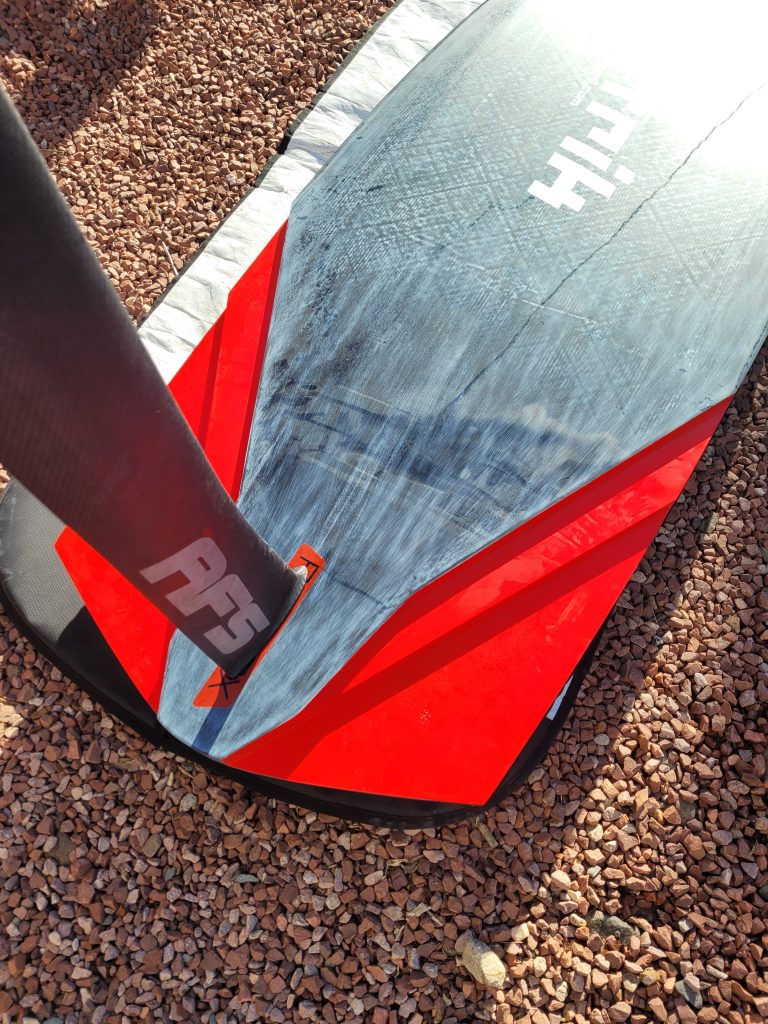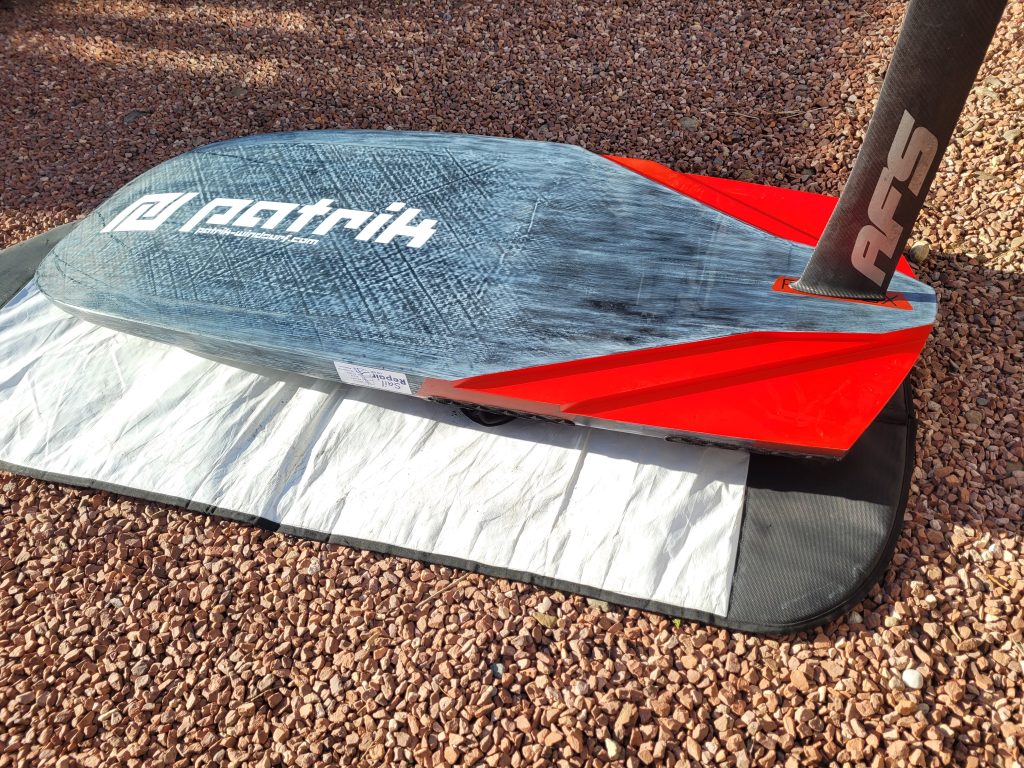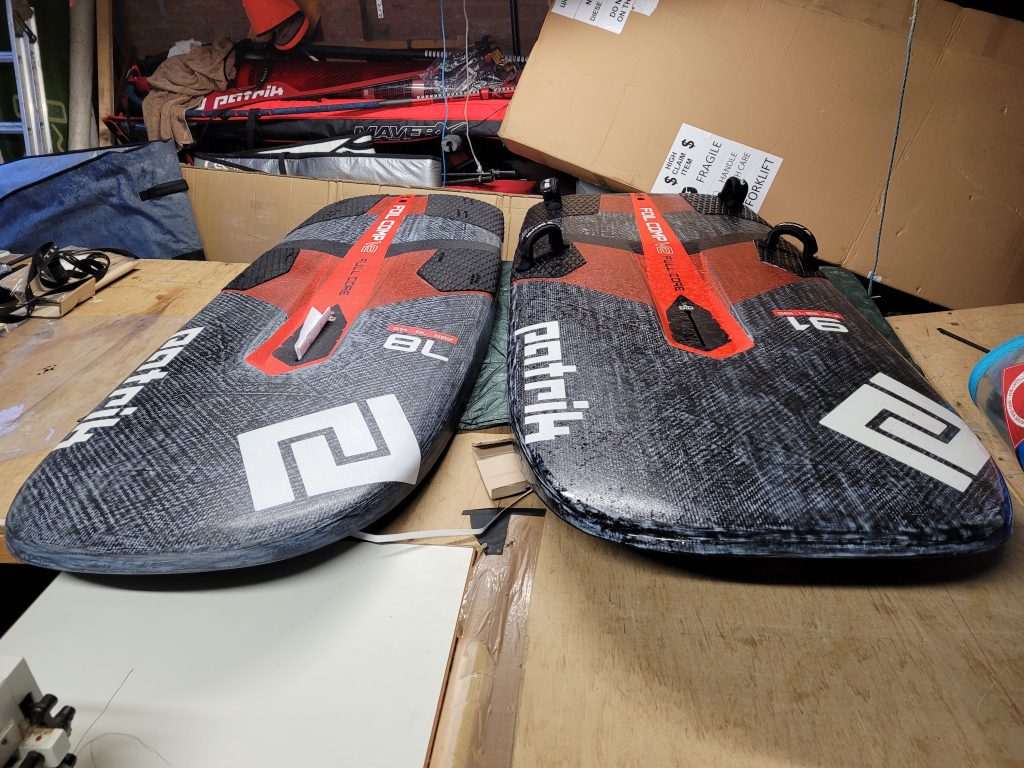Real world windfoil choices.
Below are my thoughts on windfoil choices for the real world conditions most of us sail in. This is written about the Patrik Aeon foil but a lot of it will be applicable to other foils.
Why am I doing this? There is already a lot of information online about ideal foil set up but I find most of what is written is aimed at racing. I don’t race but I do like going as quick as possible especially in light winds. I also want maximum control in gusty strong winds. I do most of my foiling in a sea loch on the west coast of Scotland. The water is surrounded on three sides by mountains so it can be gusty to say the least. We also get squally winds coming off the Atlantic so 10 to 25 kt wind range is not unusual. While these conditions can be demanding they do mean you can test things very quickly as the chances of being both under and over powered in a ten minute period are quite high.
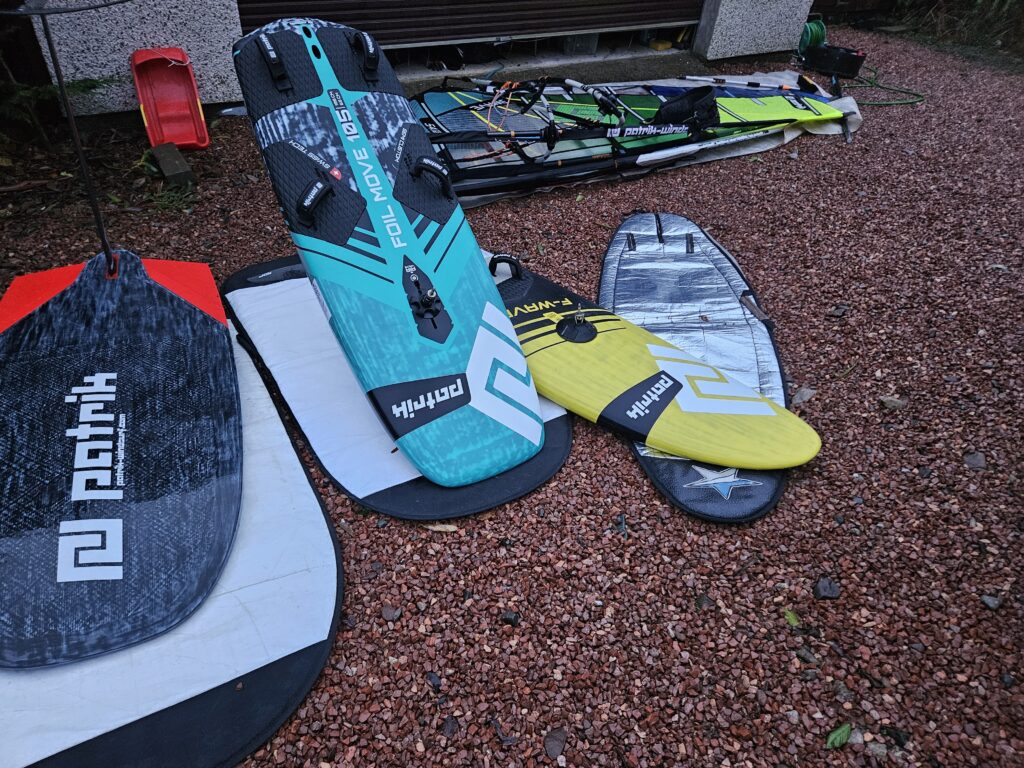
Light winds 6- 10 kts
95s mast + V1 TI fuselage – I use this mast because it is the thinnest and therefore the most efficient and light winds are all about efficiency. Whatever rear wing (stab) I use it is set in the rearmost position for maximum stability. I always use the +1’ shim as I find that works fine on both sizes of stab and on both my fuselages.
On a general note – I always use the 190 stab with the 750 and 900 front wings and the 160 stab with 650 and smaller front wings.
The board will always be a Patrik Foil Comp 85, sail a Patrik S2 8.4 or 7.8 meter.
Choice of front wing for light winds? A lot is written about what the PWA sailors are using but I am not racing. If I look at the water and I can see some gusts of maybe 7 kts but between the gusts the wind looks more like 5 kts then maybe I will go with the 900 wing with the aim to get flying in one gust and then manage to fly to the next gust and gybe in that to try to keep flying. The larger wings help to keep sustained flight. If the gusts are 8+ kts then maybe I will go with the 650 front wing which will give me more speed and I can still get through the light patches of wind but I will need to find another windier patch to fly round in a gybe.
To try to quantify things, I would say I need to get the board moving at about 5kts to take off with the 900 wing and about the same with the 750 wing. The difference being the larger wing can take off in a shorter distance which is useful if the gust is only 15 meters wide and you have to take off in that space. The 650 wing needs the board to be wound up to about 8kts board speed. That is possible in say 8 kts of wind but you need to consider the size of the windy patches and how smooth the water is. These are the sort of things I find no one is talking about and are quite important. Maybe you have read that some great racer can get his board flying in 6 kts with an 8.4 sail so you take yourself off to your local lake to do the same. But the wind is onshore and the small chop is bouncing back off a wall creating a nasty short chop, you will then find it very hard to get the board up to take off speed. You can get a similar situation on the open sea where you can only get flying in one direction because the other direction you are trying to take off directly into the waves and you just can’t build the speed up. Whereas in the other direction you can get the board on the downslope of a wave and use it for a bit of a push.
Whether you are using a 9.0 or 7.5 meter sail for your light wind foiling the thing is having enough wind to pump against. If you give your rig a quick pump you will quickly know if there is any power there for you to use to build up to take off speed.
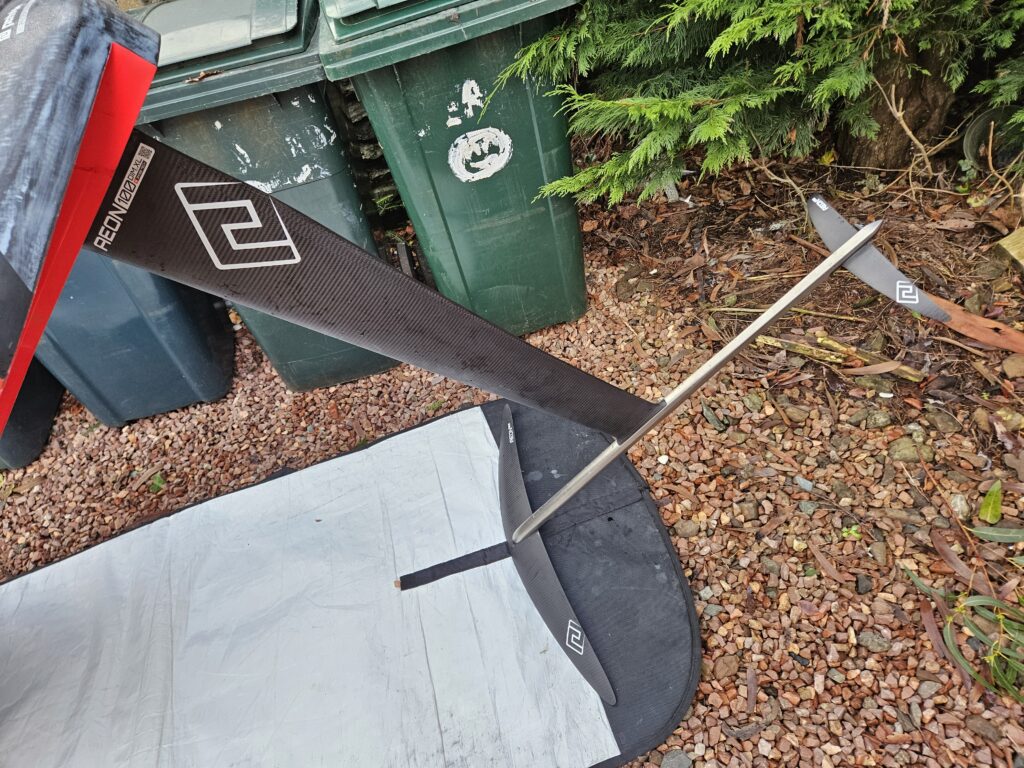
Medium winds 10 -18 kt
95s mast – for maximum efficiency
Or
100 XL mast – if the sea state is getting higher and I think “longer the better”.
Fuselage V1 so that I can get maximum lift from the front wing. But sometimes V2. The V2 fuselage puts the front wing about 2cm further back. The end result is similar to if you moved all your footstraps 2 holes forward. In effect it tames things down a bit. I use the V2 fuse if the wind is offshore when I need as much range out of the foil as possible.
Board will be a Patrik Foil Comp 85 or 78 or even a Patrik foil move 105. Sail – Patrik S2 7.8, 7.2, 6.6 or maybe a big wave sail if I am traveling somewhere with limited kit.
This is when things start to get a bit more diverse. In light winds efficiency is the goal which mirrors what any racer would be trying to achieve. But in 15 kts of wind there can be a divergence of interests.
If the water is flat and I feel like it I may choose to keep to the efficiency principles of a largish sail and a small front wing on the V1 fuselage so that I can go as fast as I can (I am not a fast foiler, but what I mean is “fast for me”)
So I would be on the 95s mast, v1 fuse, 650 or 450 front wing and 160 stab. Sail wise would be 7.2 or 7.8.
BUT there are days with flat water when I don’t want to be going fast! Why? Because we can get days in the summer when there are big rafts of seaweed floating about or days in the winter after storms when there are lots of things in the water. Times like that require more or a cruisey attitude and I might use the 750 front wing and a slightly smaller sail.
On more open water 15 kts of wind can make the water anything but flat. And maybe trying to race across 1m high chop requires a bravery I left behind some years ago. In such conditions I would go for the longer 100 mast and perhaps the V2 fuselage and then choose between the 650 and 750 front wing.
Strong winds 18 – 30 kts
Both masts are still applicable but I would err towards the longer 100 mast.
Fuselage – V2
Board – Patrik Foil comp 78 or Patrik Foil move
Sails – patrik GTS foil 5.8 or Patrik ride foil 5.4 or wave sail down to very small.
Front wings 750, 650 or 450
I can hear you think “750 is a light wind wing” but above a certain wind strength I often find myself going back towards larger wings. Yes, there is the race philosophy of more wind = smaller wings and there is some logic to that but I will explain why it often doesn’t work for me. Again I need to emphasize I’m not racing, just looking to enjoy myself on the water. While some people are lucky and sail in places that can have steady strong winds, unfortunately I am not so lucky and a windy day may see the wind varying between 15 and 40 kts.
Small wings and sails – small wings need a fast water flow over them to enable them to fly. That in turns requires a constant drive from the rig. In effect it doesn’t matter if the drive comes from a 8.5 meter sail in 10kts of wind or a 3.5 meter sail in 30 kts the pressure is similar. That is why the PWA sailors can use very small front wings in only moderate winds and it is often easier to provide steady drive into the foil with a big rig in a moderate wind. Compare that to when you are out flying happily in 20 kts of wind and a rain squall suddenly puts the wind up to 30+ kts. The usual solution is to ease off and sheet out a bit but small front wings don’t really like that and you can find your session becomes very stop/start.
Linked to what I have said above is the type of sail you use. Foil race sails with all their cams and forced draft/shape in the sail provide a very constant power source. They are great and a definite bonus towards level flight in gusty conditions and are able to fly through holes in the wind better than anything else. But what happens when you become overpowered? You can’t help but sheet out a bit and the sail will then provide “half power”, you can’t completely switch the power off. You have to hide the sail when entering gybes but you can certainly still have a good session. If the wind picks up further then it becomes very uncomfortable. A rotational foil sail may lack the grunt for the earliest of take off but can be a pleasant sail even in lighter winds. In strong winds when you have to sheet right out suddenly you have no power at all. If you are quick you can keep flying by using short pulses of power but generally you will find it hard to maintain flight on a small front wing. It comes down to personal choice and what sails you are using but don’t always follow the mantra of the windier it is the smaller the front wing you must use.
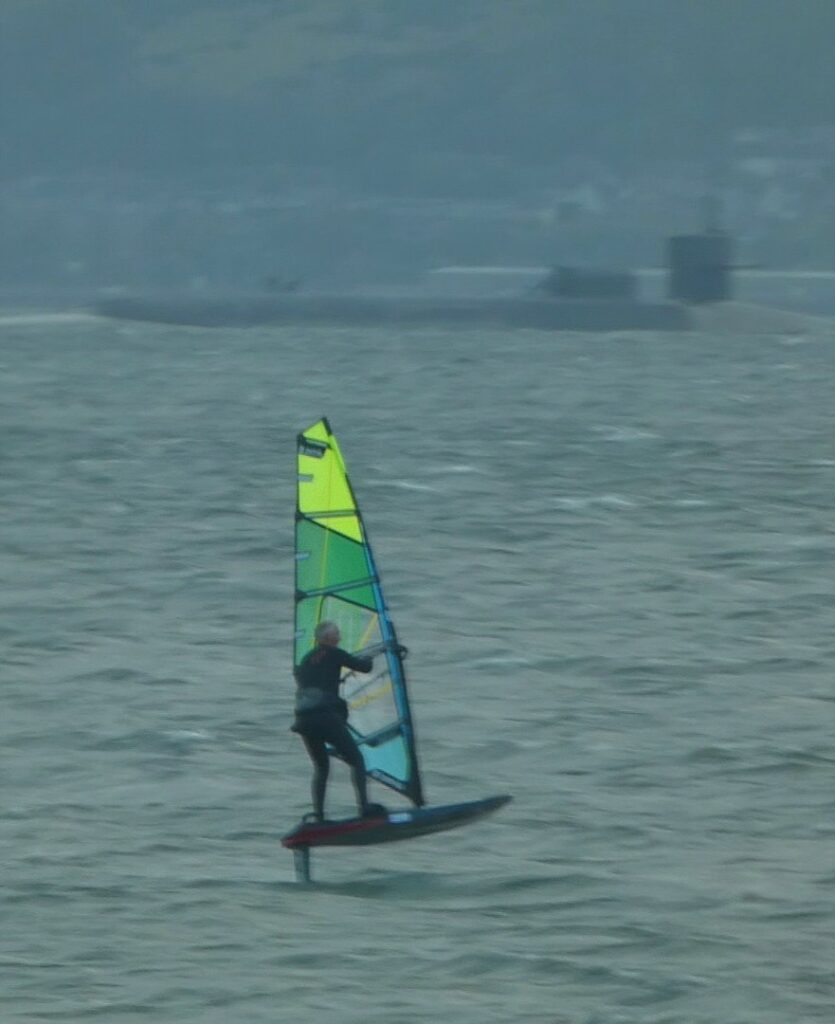
On my foil move 105 I only use front wings from 650 upwards and will use a smaller sail. I also move the rear wing forward to give quicker height control which is useful when the waves are getting bigger.
Summary
There are many ways you can look at the relationship between front wing size, sail size and wind strength. Here are some of my thoughts on the matter.
In light winds I can get flying in 10m on the 750 or 900 wing, with the 650 I might be puming for over 50m to wind up to take off speed so bare that in mind if you are sailing on a small lake where the gusts are the size of a tennis court. Small wings and early flight lend themselves more towards places where the patches of stronger wind are the size of a football pitch.
In moderate winds – if you have enough wind to easily waterstart you should have enough wind to keep a small foil wing going. I don’t think it matters if your power source is 4 or 8m as long as it is powerful enough to waterstart.
In strong winds remember you can be a hero and chase 30+ kts but you can also go on a bigger wing and smaller sail and gybe away until your heart’s content.
I am 95kg, 59 years old with a mental age of 18. .
